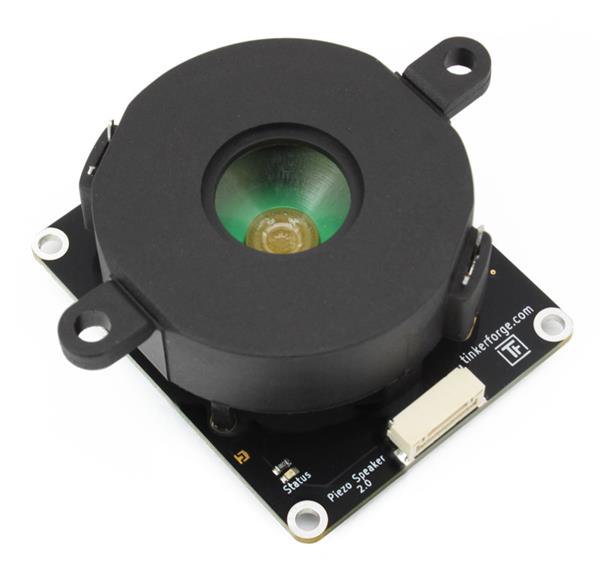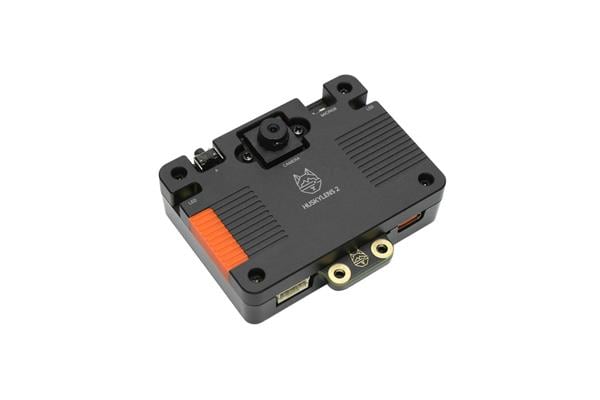How to Create a Successful Electromaker Submission
Here at Electromaker, we often receive questions about what makes a solid submission. While there's not necessarily one answer, several elements comprise a quality Electromaker article. Learn how to craft an awesome project which will thrive within the Electromaker community.
Step 1: Register for an Electromaker account
You can register for a free account using your favourite social media platform or by using your email address here: https://www.electromaker.io/register. Once your account is set up you can start your project submission by either clicking on the [+] icon in the top left of the screen or by visiting this link: https://www.electromaker.io/project/new (you must be logged in!).
Step 2: Have an Idea
Although this step might seem straightforward, it's nonetheless essential. All of the best articles begin with an idea. But what should you write about? As the maker in Electromaker suggests, we're a community for makers. As such, do-it-yourself (DIY) tech projects are ideal for Electromaker submissions.
Step 3: Make Your Project Unique
Your Electromaker project doesn't need to be the only tutorial like it in existence. But you should strive to set it apart from similar ideas. For instance, RetroPie has been covered in a bevy of tutorials. This wooden Pi handheld games console is an awesome twist on a classic Raspberry Pi tutorial. Similarly, this bartop arcade created with a Udoo x86 and RetroPie is a fresh article idea.
Essentially, create a tutorial which offers something unique to the reader, whether an entirely new idea or a twist on an existing project. When creating an Electromaker post, ask yourself why a reader will want to peruse your article.
Step 4: Come Up With a Title
As simple as picking a title seems, it's actually more difficult than it appears. A successful title provides insight into what your project is, while hooking the reader. An excellent example is "World's Smartest Home - Blockchain Chores & Kids Crypto." Within its title, you glean that it's a smart home tutorial which uses blockchain. Descriptive and intriguing, it fuses the main elements of what make an awesome title.
Step 5: Format it Logically
Project pages feature a very clear layout. This helps when posting, but you'll still need to be as descriptive as possible.
About the Project
The beginning of your project features an about section. Think of this as your article's bio. Similar to an online dating portfolio, you'll want to aim for a sentence to a short paragraph. In this space, mention as clearly and concisely as possible what your project is. You can include specific software and hardware involved in this space. For instance, if you're writing a tutorial on how to install RetroPie on a Raspberry Pi, you could use the following text:
"Learn how to install RetroPie on a Raspberry Pi 3 for a small yet powerful retro gaming arcade."
Project Info
Next up, you'll enter basic information about your project:
- Difficulty: Easy, Moderate, Difficult
- Categories: I.e. Home Automation, 3D Printing
- Platforms: I.e. Arduino, Raspberry Pi
- Estimated time: I.e. 2 hours, 2 days
This offers a glimpse at what your tutorial entails and required platforms. Therefore, readers may ascertain if they'd like to proceed.
Items Used in This Project
Now, list the individual hardware, software, and tools required:
- Hardware components: I.e. Raspberry Pi, Arduino, microSD card, Soldering iron
- Software app and online services: I.e. RetroPie, Amazon Web Services
- Hand tools and fabrication machines: I.e. Screwdriver, Circular Saw
Story
After basic project information and listing requirements, it's time for the juicy part: writing the actual tutorial. You may think of this as an essay of sorts. But before you frantically aim your mouse at the back button, don't worry, we won't return your submission with red Xs crossing out entire paragraphs. By following this guide, your project will wonderfully fit our standards.
Begin with an introduction to what your project is, and the technology used. Fuse the about the project, project info, and items used in this project sections. Don't include all information from these areas. Instead, describe the end product, as well as specific hardware and software used.
After your opening paragraph, delve into the tutorial. It's best to break your article into different steps. Using the example of installing RetroPie on a Raspberry Pi, your various steps may be:
- Install RetroPie
- Configure Your Controller
- Initial Set Up
- Post Installation Set Up
- Final Thoughts
This is a pretty basic breakdown. Within each of these, you may provide subcategories such as an "Installing Emulators" section under the "Initial Set Up" header, or "Scraping ROMs" within "Post Installation Set Up."
Whenever possible, including screenshots is a beneficial best practice. Visuals provide a concrete way for readers to understand what you're describing. These should be of high quality.
The best tutorials answer any questions a reader might have in tutorial text. As such, it's easier to write a post while you build a project in real time, or on a second pass through once you've completed it previously.
Best Practices
The popularity of social media sites such as Instagram and Twitter prove that audiences love visuals. If you can, feature videos and/or pictures to augment your tutorial. Describe each step concretely. Don't assume prior knowledge from readers. When using abbreviations, i.e. write out Internet of Things and include IoT in parentheses after: "Internet of Things (IoT)." Logically plot out your tutorial with steps in their proper order.
Finally, and arguably the most crucial component of a successful Electromaker project: Make it entertaining. You don't need to strive for flowery diction. Whether you're more Hemingway or Stephen King, retain your voice and focus on an easy to follow tutorial. However, if you're able to entertain the reader and make your project an engaging read, that's even better. Just refrain from becoming Dickensian and rambling.
- Include visuals (pictures, videos)
- Don't assume prior knowledge from readers
- Provide as much detail as possible
- Follow a logical flow
- Make it entertaining
Top Electromaker Projects
We love all Electromaker.io projects. If you're looking for some of the best posts to our site, here are a few to check out:
- Home Automation Lamp: Neat topic, excellent documentation
- World's Smartest Home - Blockchain Chores & Kids Crypto: Very unique, and well-formatted
- Artificial Life Project: Easy to replicate, popular space and hardware
- Wooden Pi Handheld Games Console With Bullet Buttons: Builds off of an already trending project, running RetroPie on the Raspberry Pi
- Getting Started With Flint OS on Raspberry Pi: Flint OS Raspberry Pi Installation and More: Simple to follow, comprehensive tutorial
- Twitter controlled bubble machine: It's as much fun to make as to use
- Odroid-Go Review - An Affordable DIY Portable Game Console: Walks you through building and using the console
How to Create a Successful Electromaker Project: Final Thoughts
Ultimately, Electromaker.io articles vary quite a bit. Whereas some are beginner-friendly, others aim at a seasoned maker crowd. You'll find everything from basic Raspberry Pi articles to hardcore Arduino robotics tutorials. What matters is how it's written and formatted. Plus, the value it brings to the reader. Content is what fundamentally thrives at Electromaker, so generating quality articles should be your goal. Looking for topics to cover? Try following us on Twitter, Facebook, and Instagram to see what our dedicated audience is discussing!































Leave your feedback...